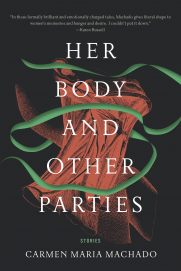Fools
- Joan Silber
- W. W. Norton & Co.
- 256pp.
- by Susan Willens
- September 13, 2013
These intertwining stories are a tour of time and place.
Six substantial stories form Fools, their characters recurring from one story to another, their worries, mistakes, and passions echoing from one generation to another. The title story propels the action from 1924, when a group-house full of friends spawns anarchism, love affairs, and Dorothy Day’s growing commitment to Catholicism and social action.
From this beginning, the stories take the reader into
this century, and from New York to Paris, India,
Palm Beach, Okinawa, and Mecca for the hadj. The second story, “Hanging
Fruit,” sets the pattern for the rest. The main character, Anthony, has roots
in the first story.His mother
appears there, a minor character who runs off with the owner of the local
speakeasy and sets up a hotel in Palm Beach. Anthony’s story turns on his
stealing money from his parents’ hotel, appearing in Paris, drinking, and
playing his clarinet in Metro stations.
One of his lovers robs him and disappears, only to turn up in the last story “Buying and Selling.” By now she is a middle-aged woman, visiting New York. She has money. That makes her interesting to Rudy, a fund-raiser for a foundation concerned with leprosy. When she finally makes a minimal contribution to this outré charity — “to drop a bundle of money on poor people in South Asia” — it serves only to reinforce her hard-won belief in herself as someone not to be laughed at.
There’s an existential puzzle here, as in all the stories in Fools. Every story ends with a shrug. A husband and wife spend their whole marriage living half the world apart, while another couple splits over religious vocabulary and watches momentous events like the World Trade Center bombing through concerns about whether one is safe going on the hadj.
Perhaps Joan Silber’s title Fools means that all belief, all commitment is foolish. As the stories develop, she makes it hard to care about the many characters, locations, and situations she evokes. The reader spends time with characters who come to nothing, and who reveal little on the way.
The flat style of the stories contributes to this anomie. In the understated first-person narrations, the style tells the reader something of the characters. For example, “my work at the bakery was not very taxing and the hours felt very, very long” lets the reader understand the speaker, who wants nothing, accomplishes nothing, and has nothing.
The liveliest language surrounds Anthony, who appears in several stories. At least his work, as a news photographer, takes him to exciting places that perk up the descriptions. But even with Anthony, when we get close to the bone, there is not much meat there.
Although it fails to excite, Fools takes the reader on an interesting tour of time and place in a neat package of interlaced stories.
Susan Willens, emerita professor of English at George Washington University, teaches literature at the Osher Lifelong Learning Center at American University, and Politics and Prose bookstore.

